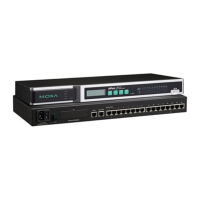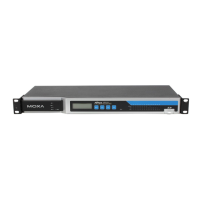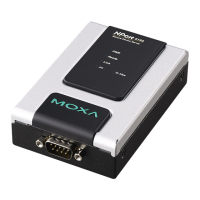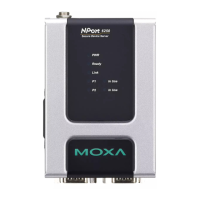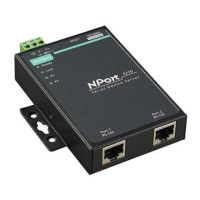You can access Basic Network Settings by expanding the Network Settings item in the navigation panel.
Basic Network Settings is where you assign the NPort 6000 IP address, netmask, Gateway, and other IP
parameters.
NOTE: You must assign a valid IP address to your NPort 6000 before it will work in your network environment.
Your network system administrator should provide you with a unique IP address and related settings for your
network. First-time users can refer to Chapter 3, Initial IP Address Configuration, for more information.
IPv4 Configuration (default=Static): You can choose from four possible IP configuration modes.
Option Description
Static User-defined IP address, netmask, gateway.
DHCP DHCP server-assigned IP address, netmask, gateway, DNS, and time server
DHCP/BOOTP DHCP server-assigned IP address, netmask, gateway, DNS, and time server, or
BOOTP server-assigned IP address (if the DHCP server does not respond)
BOOTP BOOTP server-assigned IP address
PPPoE PPP over Ethernet, remote ISP-assigned IP address
IPv4 Address (default=192.168.127.254): Enter the IP address that will be assigned to your NPort 6000.
All ports on the NPort 6000 will share this IP address. An IP address is a number assigned to a network device
(such as a computer) as a permanent address on the network. Computers use the IP address to identify and
talk to each other over the network. Choose a proper IP address that is unique and valid in your network
environment.
Netmask (default=255.255.255.0): Enter the subnet mask. A subnet mask represents all of the network
hosts at one geographic location, in one building, or on the same local area network.
When a packet is sent out over the network, the NPort 6000 will use the subnet mask to check whether the
desired TCP/IP host specified in the packet is on the local network segment. If the address is on the same
network segment as the NPort 6000, a connection is established directly from the NPort 6000. Otherwise, the
connection is established through the given default gateway
Gateway: Enter the IP address of the gateway if applicable. A gateway is a network computer that acts as an
entrance to another network. Usually, the computers that control traffic within the network or at the local
Internet service provider are gateway nodes. The NPort 6000 needs to know the IP address of the default
gateway computer in order to communicate with the hosts outside the local network environment. For correct
gateway IP address information, consult the network administrator.
IPv4 DNS server 1: This is an optional field. If your network has access to a DNS server, you may enter the
DNS server’s IP address in this field. This allows the NPort 6000 to use domain names instead of IP addresses
to access hosts.
Domain Name System (DNS) is the way that Internet domain names are identified and translated into IP
addresses. A domain name is an alphanumeric name, such as www.moxa.com, which is easier to remember
than the numerical IP address. A DNS server is a host that translates this kind of text-based domain name into
the actual IP address used to establish a TCP/IP connection.
When the user wants to visit a particular website, the user’s computer sends the domain name (e.g.,
www.moxa.com) to a DNS server to request that website’s numerical IP address. When the IP address is
received from the DNS server, the user’s computer uses that information to connect to the website’s web
server
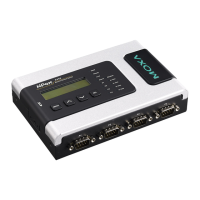
